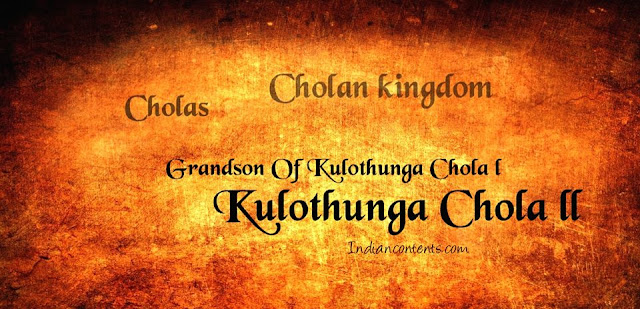Kulothunga Chola II was one of the great Chola kings who maintained the status of Chola empire on the Indian subcontinent. He was the son of Vikrama Chola and he succeeded his father in 1135 A.D. He was made co-regent by his father in 1133 A.D., so his inscriptions mention the start of his reign from 1133 A.D. instead of 1135 A.D. He was also known as Tiruchirru Chola.
The famous Tamil movie named Dashavatharam's story was inspired from the real incidents of Kulothunga II's time. As we all know that most of the Chola monarchs were devotees of Lord Shiva but did not oppose Vaishnavism. Similarly, Kulothunga II was also a Shaivite and he patronized it. He alike his ancestors renovated the famous temple of Nataraja temple at Thillai (Chidambaram temple). Incidentally, this Shaivite temple also has a separate temple for Vishnu as Govindaraja inside it. During the process of renovation of Chidambaram temple by Kulothunga II, there arose a need to shift the idol of Lord Vishnu temporarily. This was strongly opposed by Vaishnava community. Rangaraja Nambi was among the Vaishnavas and he rebelled against king. Kulothunga II forcibly shifted the idol temporarily so that the renovation work is carried on smoothly. It was said that Rangaraja Nambi was chained together with the idol of Lord Vishnu and was thrown in to the sea following the orders of the king. This was a baseless statement as it lack any type of proof. It was probably rumor created by some of the Vaishnavites to frame king as a anti-vaishnavite. Apart from this, there wasn't a single incident known in which the king opposed Vaishnavism.
Kulothunga Chola II's reign was a peaceful reign and he was tolerant towards other religions. There were no conquests made by him. The Eastern Chalukyan provinces including Vengi which were captured by his father were lost during Kulothunga II's reign. Apart from that, Kulothunga II was successful in maintaining such a vast area given to him by his father to rule as a king. The capital of Chola's at his time was Gangaikonda Cholapuram. Kulothunga II spent major part of his life time in Chidambaram than in capital city. Only two of his queens were mentioned in his inscriptions. The chief queen was Tyagavalli also known as Bhuvanamulududaiyal and the other queen was Mukkokilan. Kulothunga Chola II was succeeded by Rajaraja Chola II in 1150 A.D.







0 Comments